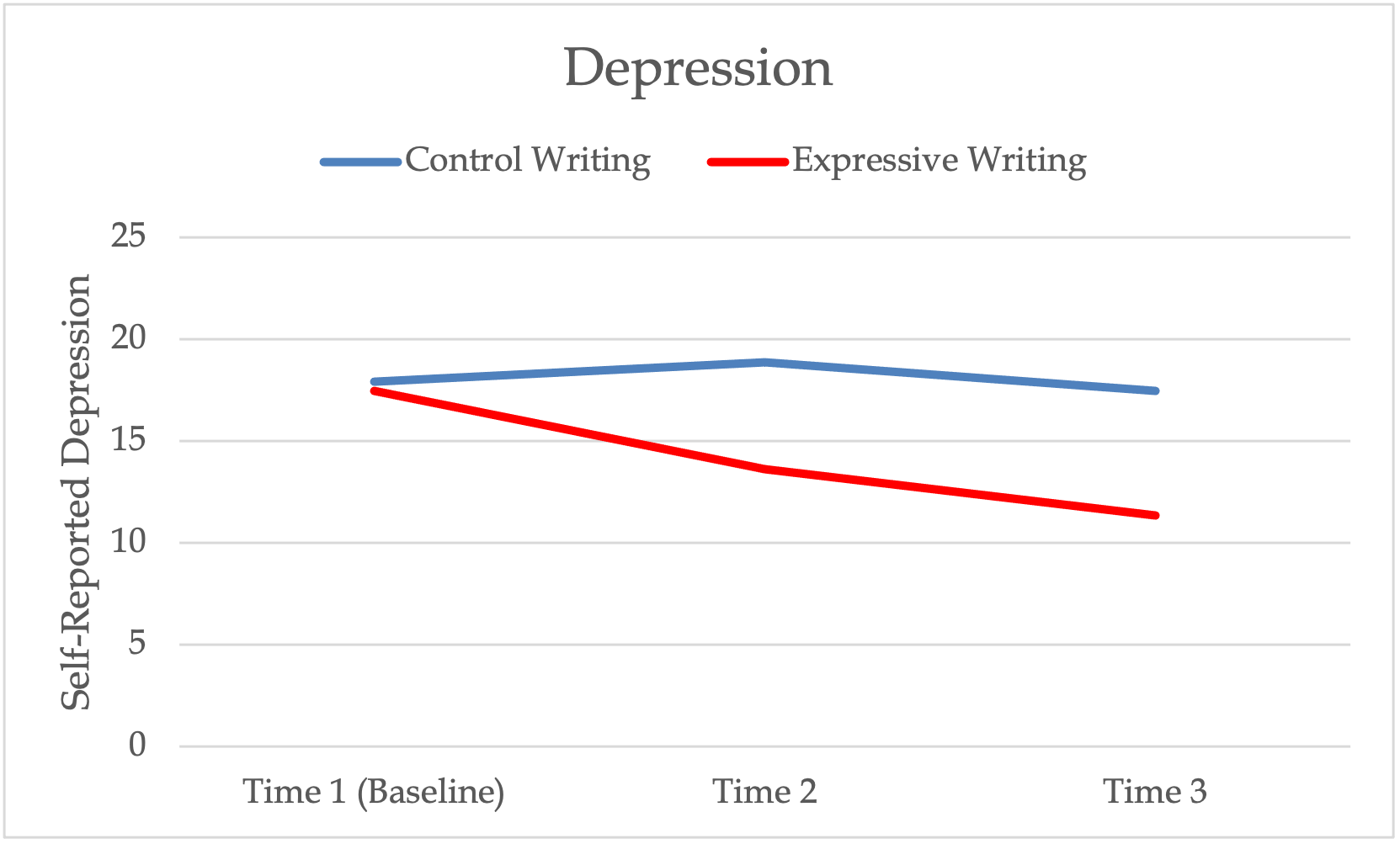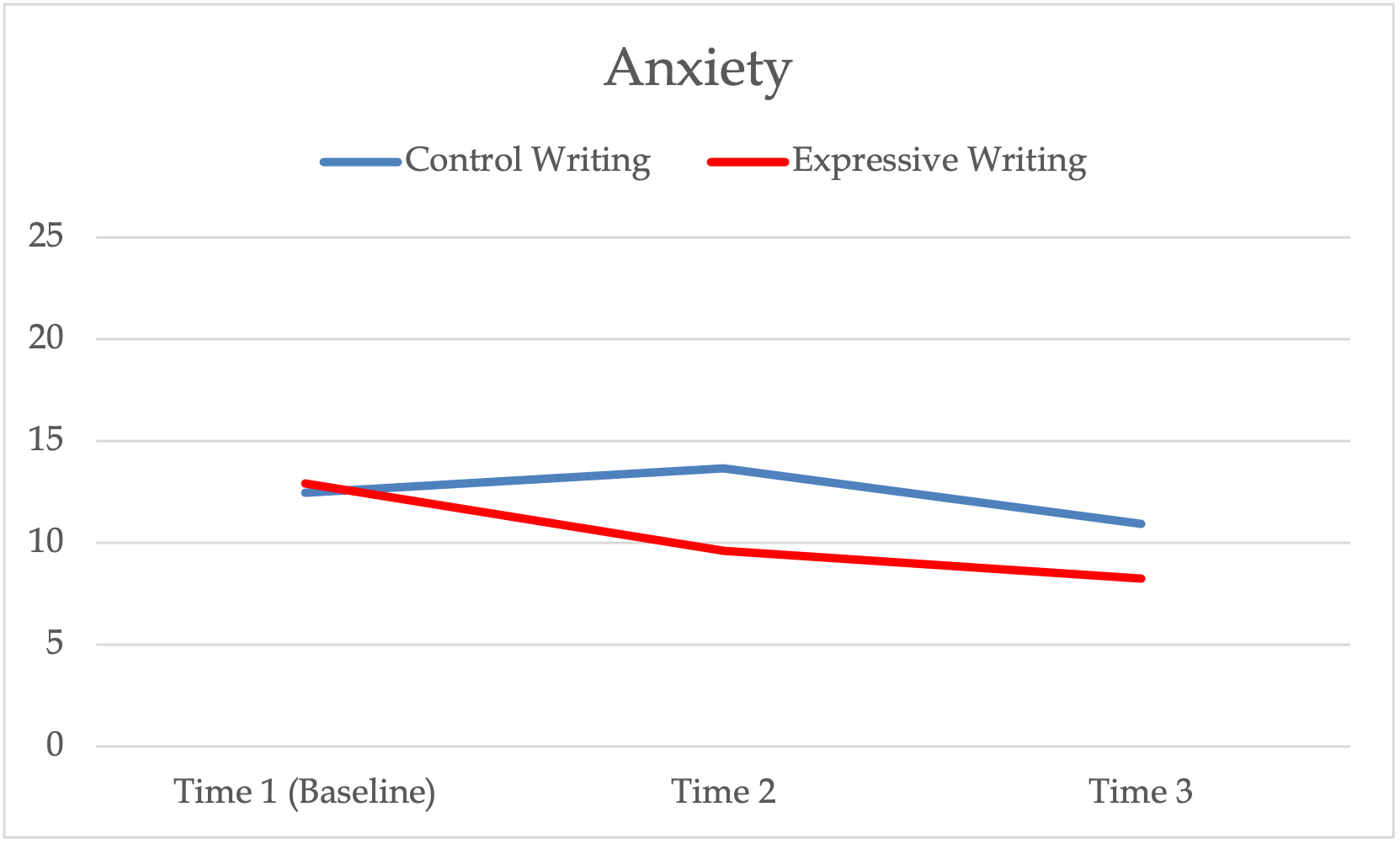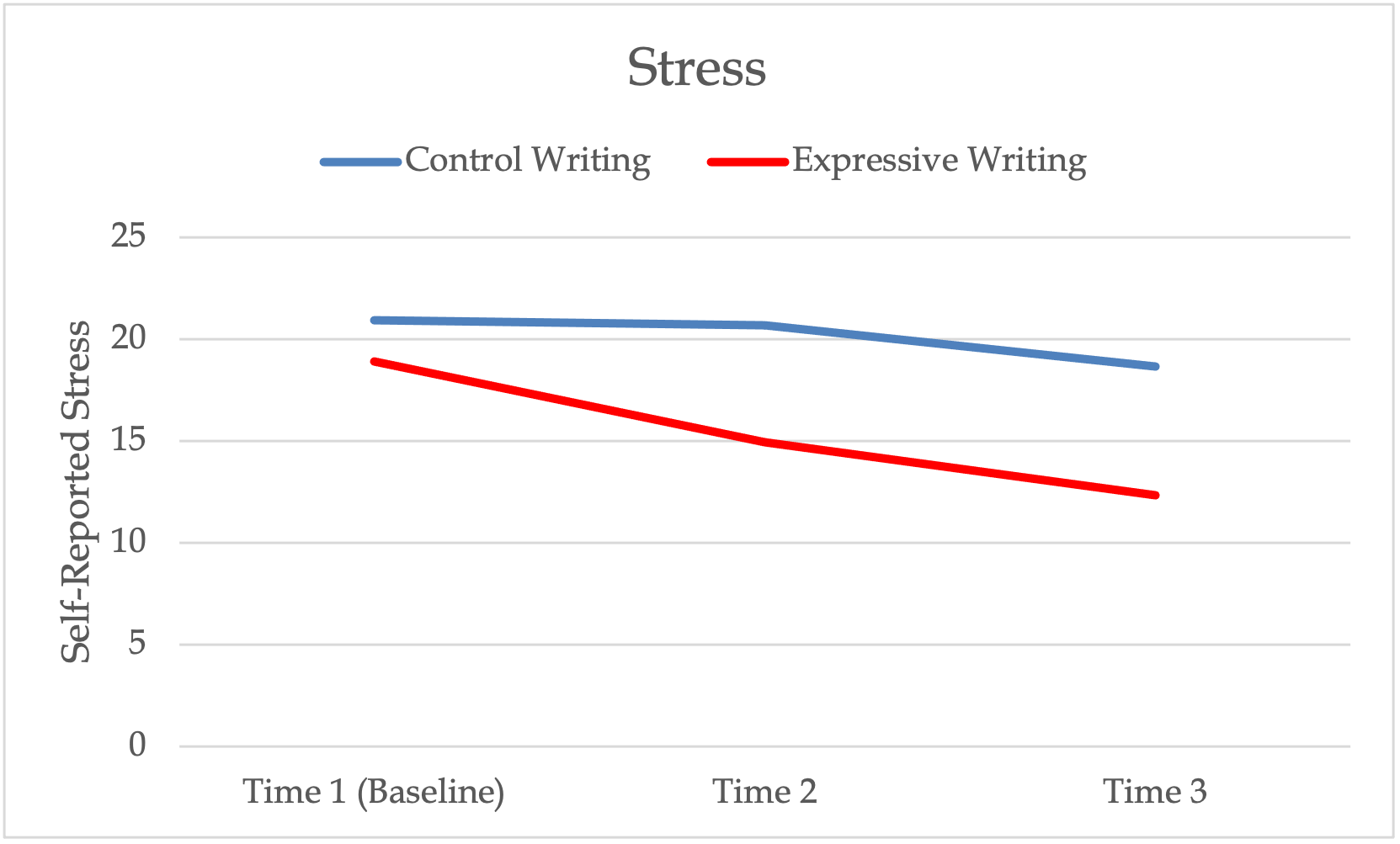Chapter 14 – Emotion Regulation
Impact of Expressive Writing in a Therapeutic Context
A recent study (Graf et al., 2008) applied the writing paradigm to therapeutic treatment for individuals suffering from depression and anxiety. In this study, students receiving treatment were randomly assigned to a writing or control group. Participants wrote for 20 minutes each week for a period of two weeks. Their therapists were blind to their clients’ assigned condition. Below are the instructions each group received about writing.
Over the two-week period, expressive writing participants showed a greater reduction in self-reported depression, anxiety, and stress (see Figures 4-6). Clients in the expressive writing reported greater satisfaction with therapy compared to control clients. Further, therapists reported that they discussed the writing more with clients in the intervention than control group and that their intervention clients achieved greater insight than control clients (remember, the therapists were blind to the conditions!).
Figure 4
Influence of Writing Type on Self-Reported Depression Over Time

Long Description
The image is a line graph titled “Depression,” showing self-reported depression levels over three time points for two different writing conditions: Control Writing and Expressive Writing. The x-axis represents three time periods: Time 1 (Baseline), Time 2, and Time 3. The y-axis shows self-reported depression scores ranging from 0 to 25. The blue line represents the Control Writing condition, which shows a slight increase from Time 1 to Time 2, followed by a decrease at Time 3. The red line represents the Expressive Writing condition, which shows a consistent decline in depression scores from Time 1 to Time 3.
Adapted from “Written Emotional Disclosure: A Controlled Study of The Benefits of Expressive Writing Homework in Outpatient Psychotherapy,” by M.C. Graf, B.A. Gaudiano, and P.A. Geller, 2008, Psychotherapy Research, 18(4), p. 394 (https://doi.org/10.1080/10503300701691664) Copyright 2008 by Routledge.
Figure 5
Influence of Writing Type on Self-Reported Anxiety Over Time

Long Description
The image is a line graph titled “Anxiety.” It compares two writing methods, Control Writing and Expressive Writing, across three time points. The x-axis represents time points labeled as Time 1 (Baseline), Time 2, and Time 3. The y-axis ranges from 0 to 25, representing anxiety levels. The blue line, labeled “Control Writing,” starts at approximately 13 at Time 1, slightly rises at Time 2, then slightly decreases at Time 3. The red line, labeled “Expressive Writing,” starts slightly below the blue line at Time 1, decreases noticeably by Time 2, and continues to decrease at Time 3.
Adapted from “Written Emotional Disclosure: A Controlled Study of The Benefits of Expressive Writing Homework in Outpatient Psychotherapy,” by M.C. Graf, B.A. Gaudiano, and P.A. Geller, 2008, Psychotherapy Research, 18(4), p. 394 (https://doi.org/10.1080/10503300701691664) Copyright 2008 by Routledge.
Figure 6
Influence of Writing Type on Self-Reported Stress Over Time

Long Description
The image is a line graph titled “Stress” illustrating the self-reported stress levels over three time periods. The vertical axis is labeled “Self-Reported Stress” ranging from 0 to 25. The horizontal axis shows three time points: Time 1 (Baseline), Time 2, and Time 3. Two lines represent different conditions: the blue line for “Control Writing” and the red line for “Expressive Writing.” The blue line for Control Writing starts slightly above 20 at Time 1 and shows a slight decrease over time. The red line for Expressive Writing also starts above 20 but shows a more significant decrease over time, ending below 15 at Time 3.
Adapted from “Written Emotional Disclosure: A Controlled Study of The Benefits of Expressive Writing Homework in Outpatient Psychotherapy,” by M.C. Graf, B.A. Gaudiano, and P.A. Geller, 2008, Psychotherapy Research, 18(4), p. 394 (https://doi.org/10.1080/10503300701691664) Copyright 2008 by Routledge.
For those of you interested in how expressive writing could be used in a therapeutic setting visit Pennebaker’s article here.

